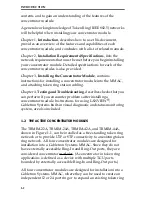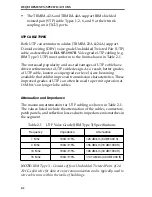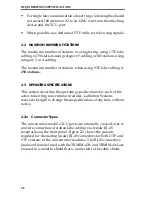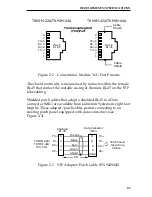
INTRODUCTION
1-2
contents and to gain an understanding of the features of the
concentrator module.
A general working knowledge of Token Ring (IEEE 802.5) networks
will be helpful when installing your concentrator module.
Chapter 1,
Introduction
, describes how to use this document,
provides an overview of the features and capabilities of each
concentrator module, and concludes with a list of related manuals.
Chapter 2,
Installation Requirements/Specifications
, lists the
network requirements that must be met before you begin installing
your concentrator module. Detailed specifications for each of the
concentrator modules is also provided.
Chapter 3,
Installing the Concentrator Module
, contains
instructions for installing a concentrator module into the MMAC,
and attaching token ring station cabling.
Chapter 4,
Testing and Troubleshooting
, describes checks that you
can perform if you encounter problems after installing a
concentrator module. Instructions for using LANVIEW®,
Cabletron Systems built-in visual diagnostic and status monitoring
system, are also included.
1.2
THE ACTIVE CONCENTRATOR MODULES
The TRMIM-22A, TRMIM-24A, TRMIM-42A, and TRMIM-44A,
shown in Figure 1-1, can be installed as a free standing token ring
network or to provide UTP or STP connectivity to an existing token
ring network. All four concentrator modules are designed for
installation into a Cabletron Systems MMAC. Since they do not
have externally accessible Ring-In and Ring-Out ports, they are
considered
concentrator modules. (A concentrator in token ring
applications is defined as a device with multiple TCU ports
bounded by externally accessible Ring-In and Ring-Out ports.)
All four concentrator modules are designed for installation into a
Cabletron Systems MMAC, where they can be used to create an
independent 12 or 24 port ring or to expand an existing token ring








































